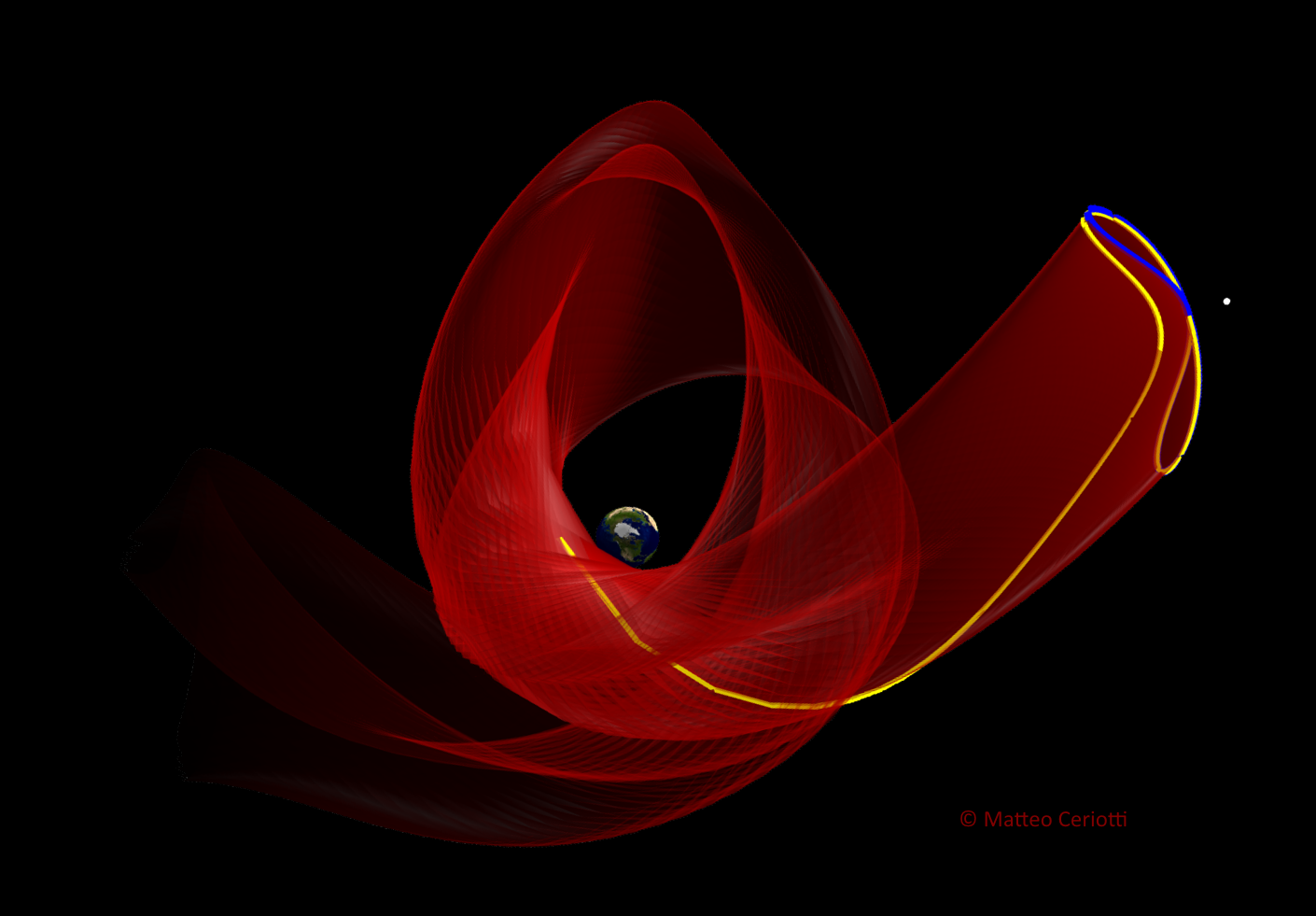Orbital dynamics, control and formation flight
Orbital dynamics is the study of the motion of bodies – spacecraft in particular – in space. This is strictly related to the study of how to actively control their motion using a propulsion system, in order to achieve mission goals. Space formation flight (like its aircraft equivalent) is about controlling two or more spacecraft, such that they maintain a given relative position with respect to each other.
Our approach
Our research uses linear and non-linear methods to control the spacecraft’s orbit. We are interested in exploiting natural perturbations like atmospheric drag and solar radiation pressure to change the orbital parameters, with minimum propellant consumption. This is particularly applicable in particular to future, large space structures, but also to small satellites with deployable surfaces. We are also interested in more unusual control strategies, based on electromagnetic interactions. Similar control methods are investigated and applied for the control of formations of spacecraft.
Why is this research important?
Today high resolution Earth imaging can only be obtained with relatively large, expensive spacecraft; a constellation of cooperating, inexpensive nanosatellites could in future achieve a similar goal with substantially reduced costs. A formation of spacecraft, using synthetic aperture radar technology, can be used to detect oil spills and monitor illegal oil bunkering activities. Finally, current rendezvous and docking operations, as well as future in-orbit assembly of large spacecraft require precise control over the relative orbital dynamics.
Researchers
Research theme
Related projects

The optimisation of trajectories from Earth to the Moon.
In particular, the blue line is a vertical Lyapunov, or figure-of-8 orbit, in the Earth-Moon system, and the red “ribbon” is called a manifold, the set of all trajectories that lead to the target orbit. Highlighted in yellow is one particular trajectory, the one that passes closest to the Earth, and therefore a candidate for the transfer.

